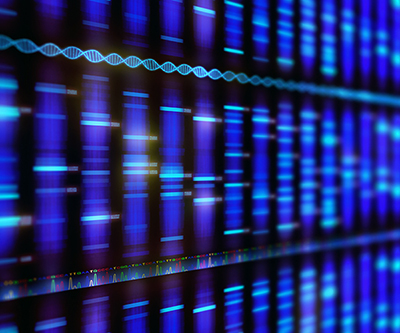
NICHD’s focus on technology research often leads to advances that directly benefit patients of all ages and backgrounds.
NICHD-supported research showed that genomic sequencing was better at identifying risk of some childhood genetic disorders than standard screening techniques for these diseases. The study authors, who are part of the BabySeq Project 
Other researchers funded through the NSIGHT program combined whole genome sequencing with artificial intelligence to speed diagnosis of genetic diseases in newborns. Their approach diagnosed a typical case in 20 hours, compared with 16 days for traditional sequencing. The researchers used an automated system to rapidly sequence the newborn’s genome. Then, using an artificial intelligence program, they matched sequencing results and patient records to genetic diseases. This new method could help diagnose rare genetic disorders more quickly, providing more time to inform treatment decisions and provide care.
People with autism spectrum disorder (ASD) typically have trouble socializing, in part because they struggle to recognize facial expressions and maintain eye contact. NICHD-supported researchers described work on “Superpower Glass,” wearable smart glasses designed to encourage facial engagement and provide feedback to a child with ASD during social interactions. The researchers found that the glasses, used at home in combination with a therapy known as applied behavioral analysis (ABA), could improve facial engagement and emotion recognition compared to ABA alone. The intervention is one of the first randomized clinical trials to show that a wearable digital intervention can improve the social behavior skills of children with ASD.
Each year, thousands suffer spinal cord injuries with prognoses that range from almost complete recovery to total paralysis. Previous efforts using implants to heal spinal cord injuries were unsuccessful because of the limitations of earlier generation 3D printers. Because of recent improvements in this technology, NICHD-funded researchers restored limb function to spinal cord-injured rats using 3D-printed implants. These researchers generated better-fitting implants containing neural stem cells, which produce growth factors that guide the regeneration of nerve fibers. Within 6 months, the rats that received implants with neural stem cells could move their hind legs, while rats that received only stem cells or the implant did not regain movement. The researchers have generated prototypes of these implants for possible use in people with spinal cord injuries.
Digital tools can also enhance adult health, as reported by NICHD-funded researchers who used a custom modeling tool to study how social networks impact a person’s physical recovery from stroke. The researchers determined that the average patient’s social network became smaller and more close-knit in the 6 months after a stroke 
 BACK TO TOP
BACK TO TOP